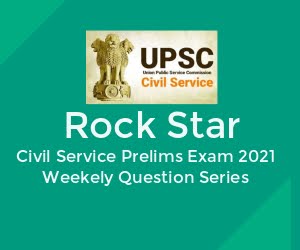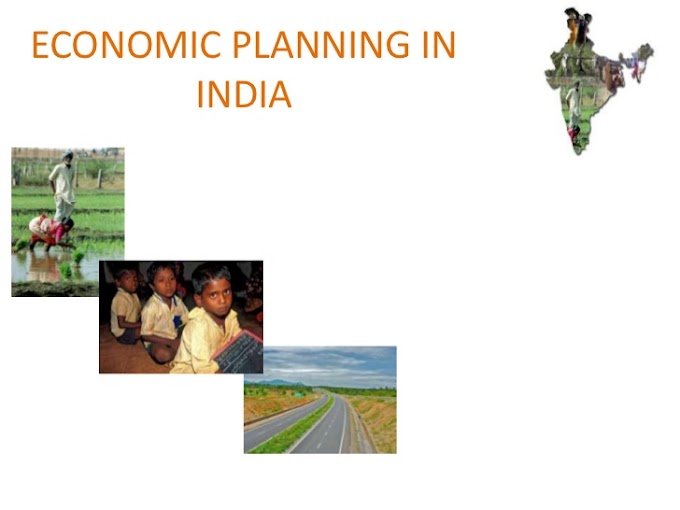Brahmo Samaj Movement:
- Founded by Raja Ram Mohan Roy in 1828.
- He earlier started Atmiya Sabha in 1814.
- Criticized Sati Pratha, casteism and advocated widow remarriage.
- He gave enthusiastic assistance to David Hare, who founded the famous Hindu College in Calcutta.
- Established a Vedanta College in which courses both in Indian and Western social and physical sciences were offered.
- He was a gifted linguist. He knew more than dozen languages including Sanskrit, Persian, Arabic, English, French, Latin, Greek and Hebrew.
- He was opposed to Sanskrit system of education; because he thought it would keep the country in darkness.
- Other important leaders were Devendranath Tagore (father of Rabindranath Tagore) and Keshab Chandra Sen.
- Tagore dismissed Keshab Chandra in 1865.
- Keshab started Sangat Sabha, Prarthana Samaj and Brahmo Samaj of India.
- Tagore’s organization came to be known as Tattvabodhini Sabha and Adi Brahmo Samaj.
- Anand Mohan Bose started the Sadharana Brahmo Samaj.
- Justice M.G. Ranade founded the Prarthana Sabha.
Rammohan Roy (1771-1833)
He was horn at Radhanagar in Bengal in 1772. He is regarded as the first great leader of modern India. He opposed idol worship and pressed on Doctrine of the Unity of God. He believed that basically all religions preach a common message. He was deeply influenced by monotheism, anti-idolatry of Islam, Sufism, and ethical teachings of Christianity & liberal & rationalist doctrines of the west. He was one of the earliest propagators of modern education.
- Started the Atmiya Sabha in 1814
- The Brahma Sabha in 1829, (Brahmo Samaj). Based on the twin pillars of-reason, the Vedas and the Upanishads. Laid emphasis on human dignity, opposed idolatry, and criticised social evils. Succeeded in persuading Lord Bentick to abolish sati in 1829
- He gave enthusiastic assistance to David Hare, who founded the famous Hindu college in Calcutta.
- Established a Vedanta College (1825) in which courses both in Indian and western social and physical sciences were offered
- Wrote in Persian his famous work ,4 Gift to Monotheists or Tuhafat-ul-Muwahidin— 1809
- Launched a movement for the abolition of Sati through his journal Sabad Kaumudi (1819)
- Published his Precepts of Jesus— 1820
- He believed that the philosophy of Vedanta was based on this principle of reason.
- Was opposed to Sanskrit system of education , because he thought it would keep the country in darkness.
Arya Samaj
- Founded by Swami Dayanand (or, Moolshankar) in 1875.
- His motto was ‘Go back to the Vedas’ & ‘India for the Indians’. He disregarded Puranas, idol worship, casteism and untouchability. He advocated widow remarriage.
- Dayanand’s views were published in his famous work, Satyarth Prakash. He also wrote Veda Bhashya Bhumika and Veda Bhashya.
- Established a large number of educational institutions in India, viz., Gurukuls, DAV schools etc.
- Also started the ‘Siddhi’ movement to convert non – Hindus to Hinduism.
- Other prominent persons of Arya Samaj were Lala Hans Raj, Pt. Guru Dutt, Lala Lajpat Rai, Swami Shraddhanand.
Swami Dayananda
Swami Dayanand Saraswati (or Mula shankar) was born in 1824 in Gujarat. He received education from Swami Virajonanda at Math lira . Formally organised the first Arya Samaj unit at Bombay in 1875
- He was known as the earliest Neo-nationalist.
- His ideal was to unite India religiously, socially and nationally, lie looked on the Vedas as India’s “Rock of Ages,” the true original seed of Hinduism. His motto was “Go back to Vedas”.
- He condemned idol worship and preached unity of God.
Ramakrishna Mission
- Founded by Vivekanand (earlier, Narendranath Dutta) (1863 – 1902) in 1897, 11 years after the death of his guru Ram Krishna Paramhans.
- Vivekanand attended the Parliament of Religion at Chicago in 1893.
- He published two papers : Prabhudha Bharat in English and Udbodhana in Bengali.
- Vivekanand’s Quotes :
- No social progress is possible without improving condition of women, who were most important instrument of social change.
- So long as millions live in hunger and ignorance I hold every man a traitor who, having been educated at their expense, pays not the least heed to them.
- All power is within you, you can do anything and everything. Believe in that; do not believe that you are weak. You can do anything and everything, without even the guidance of any one. All power is there. Stand up and express the divinity with you. Arise, awake, sleep no more. With each of you there is the power to remove all wants and all miseries. Believe in this, that power will be manifested.
- Irish woman Margaret Noble (Known as sister Nivedita) popularized Ramakrishna Mission after Vivekanand’s death.
Ram Krishna (1836-1886)
- His original name was Gadoidhar Chattopadhyay. He was born in 1836 in Kamarpukar village in Hooghly district of VVest Bengal.
- He was a priest in Dakshineshwar temple of Goddess Kali near Calcutta.
- He sought religious salvation in traditional ways of renunciation, meditation & devotion
- Emphasized that service to man was service to god
- His thinking was rooted deeply in Indian thought and culture although he emphasized the truth in all religions.
Swami Vivekananda (1863-1902)
- His original name was Narendranath Dutta and was burn at Calcutta in 1863. He was a disciple of Ramakrishna Paramhansa.
- He attended the Parliament of Religions held at Chicago in 1893 and published two papers— Prabhudha Bharata in English and Udbodhana in Bengali.
- Social ideas He stressed on social action & proclaimed the essential oneness of all religions and condemned any narrowness in religious matters.
- He believed that only in uplifting the- masses lay the vitality of the nation.
- He urged people to imbibe spirit of liberty, equality & freethinking
- Wanted new social order based on freedom & equality.
- He was champion of emancipation of women & was of the view that “no social progress is possible without improving condition of women, who were most important instrument of social change”.
- He said, “So long as millions live in hunger and ignorance I hold every man a traitor who, having been educated at their expense, pays not the least heed to them.”
Religious ideas
- Felt Hinduism needs reinterpretation
- He subscribed to Vedanta, which he declared to be a fully rational system & reinterpreted the vedant which led to Neo-Vedantism
- Condemned the caste system and the Hindu emphasis on rituals and superstitions
- Preached humanistic religion and was of the view that best form of worship was service to humanity.
Nationalism
- Contributed to the rise of nationalism. His nationalism was based on 4 pillars of
- Awakening of masses
- Development of physical and moral strength
- Unity based on common spiritual ideas
- Pride in ancient Indian glory
- Wanted modernization of India through Science & Technology
- In 1807, he founded the Ramakrishna Mission to carry on humanitarian relief and social work. Belur became the head quarters of his mission and Matha. An Irish woman Margaret Noble popularized the teachings of the Mission.
- Vivekananda died in 1902.
Young Bengal Movement
- During the late 1820 and early 1830, there emerged a radical intellectual trend among the youth in Bengal, which came to be known as the ‘Young Bengal Movement’.
- Founded by Henry Louis Vivian Derozio (1809 – 31). He was a teacher in Hindu College in Calcutta.
- He also edited the papers, Hesperus and Calcutta Literary Gazette and was connected with the India Gazette.
- He urged the students to live and die for truth. He also supported women’s education and their rights.
Veda Samaj
- Called Brahmo Samaj of South. Started by Sridharalu Naidu.
- He translated books of Brahmo Dharma into Tamil and Telegu.
Dharma Sabha
- Initiated by Radhakant Deb in 1830.
- Was opposed to reforms and protected orthodoxy, but played an active role in promoting western education even to girls.
Drain of Wealth Theory
- R.C. Dutta and Dadabhai Naoroji first cited the drain of wealth theory. Naoroji brought it to light in his book titled “Poverty and Unbritish Rule in India”. R C Dutt blamed the British policies for economic ills in his book “Economic History of India”.
- Drain of wealth refers to the portion of national product of India, which was not available for consumption of Indians.
- Drain of wealth began in 1757 after the Battle of Plassey when the Company’s servants began to extort fortunes from Indian rulers, zamindars, merchants and common people and send home.
- In 1765, the Company acquired the Diwani of Bengal and began to purchase the Indian goods out of the revenue of Bengal and exported them. These purchases were known as Company’s investments.
- Duty free inland trade provided British merchants a competitive edge over their Indian counterparts.
- The actual drain, as a part of the salaries and other incomes of the English officials and the trading fortunes of English merchants, was even more.
- The drain of wealth stunted the growth of Indian enterprise and checked and retarded capital formation in India.
Lokahitawadi
- Started by Gopal Hari Deshmukh. Advocated western education and a rational outlook. He advocated female education for the upliftment of women.
- As a vptary of national self – reliance, he attended Delhi durbar in 1876, wearing handspun khadi cloth.
Indian (National) Social Conference
- Founded by M.G. Ranade and Raghunath Rao. It held its first session in 1887.
- Its main focus was on abolition of polygamy and kulinism and it encouraged intercaste marriages. It also pledged to fight child marriages.
- The Conference is sometimes referred as the social reform cell of the Indian National Congress.
Servants of India Society
- Formed by Gopal Krishna Gokhale in 1915.
- It did notable work in providing famine relief and in improving the condition of the tribal.
Seva Samiti
Hridayanath Kunzru, a member of the Servants of India Society, organized the Samiti at Allahabad in 1914, to improve the status of the suffering classes, reform criminals and to rescue those suffering in society.
Radhaswami Movement :
- Founded in 1861 by a banker of Agra, Tulsi Ram, popularly known as Shiv Dayal Saheb or Swami Maharaj.
- The sect preached belief in one Supreme Being, the Guru’s supreme position and a simple social life for the believers (the Satsangis).
Deva Samaj
- Founded by Shiv Narain Agnihotri in 1887. it preached high moral and social conduct like, for instance, keeping oneself away from gambling and intoxicants.
- Deva Shastra tells us about the ideals of Deva Samaj.
Theosophical Society
- Founded by Westerners who drew inspiration from Indian thought and culture.
- Madam H P Blavatsky laid the foundation of the movement in US in 1875. Later, Col. M S Olcott of the US Army joined her.
- In 1882, it was shifted to India at Adyar (Tamil Nadu).
- Annie Besant was elected its President in 1907. She founded the Central Hindu College in 1898, which became Banaras Hindu University in 1916.
- The society accepted Hindu beliefs like re – incarnation, Karma and draws inspiration from Upanishads, Sankhya, Yoga and Vedanta schools.
The Aligarh Movement
- Started by Sir Syyed Ahmed Khan. He encouraged Muslims to accept the virtues of western education and urged them to apply the principle of enquiry to religion.
- For a rational and scientific order in society, he founded a scientific society in 1864, an Urdu journal, Tahzib – al – akhlaq in 1870, and the Aligarh school in 1875. The school was made into the Muhammadan Anglo – Oriental College in 1877. The college grew into the Aligarh Muslim University.
The Ahmedia Movement
- Started by Mirza Ghulam Ahmed in 1889.
- His movement embraced the belief in a universal religion, opposed sacred wars and encouraged fraternal relations among all.
The Deobandi Movement
- In 1866, the Deoband School of Islamic Theology was set up at Deoband by Rashid Ahmed Gangohi and Muhammad Qasim Nanautavi to promote studies in classical Islam and moral and religious regeneration of the Muslims. The school did not support western education and. culture.
- Its liberal interpretations of Islam earned it a high reputation.
Satyashodhak Samaj
- Founded by Jyotiba Phule in 1873 to fight Brahmanic domination and to liberate low castes by educating them and teaching them their rights. He advocated the cause of untouchables.
- Jyotiba also started a school for untouchables and an orphanage for widows.
- His books, Ghulamgiri and Sarvajanik Satyadharma Pustak questioned the traditional customs and beliefs of society.
- Met the Duke of York as the representative of poverty stricken Indian peasant.
The Justice Party
- Dr. T.M. Nair, Sir Pitti Theagaraja Chettiar and the Raja of Panagal formed the South Indian Liberal Federation (SILF) in 1916 to protest against the domination of Brahmins in government service, education and in the political field.
- The newspaper, Justice, was their main organ for expressing views and opinions.
- The SILF came to be called the Justice Party later on.
Self Respect Movement
Tamil Nadu
- The radical movement was launched by Periyar or E.V. Ramaswamy Naicker in Tamil Nadu in 1925, to awaken non – brahmins for overthrowing Brahmanic superiority.
- The movement organized weddings without involving the Brahmins and temple entry.
India
- Dr. Bhimrao Ramji Ambedkar’s movement worked for the upliftment of the untouchables by fighting for their educational, legal and political rights and encouraging them to throw off the traditional caste duties imposed on them.
- Ambedkar founded the Depressed Classes Institute (Bahishkrit Hitkarini Sabha) in Bombay in 1924, a Marathi fortnightly Bahishkrit Bharat in 1927 and the Sarnaj Samata Sangha in 1927. He also founded the Independent Labour Party.
- The Scheduled Caste Federation, a political party, was formed by him in 1942.





